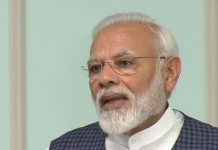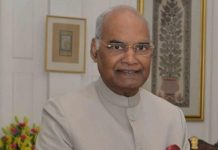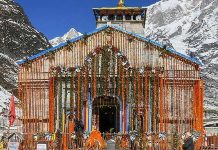
Kashmir has witnessed a marked decrease in violence ever since the unilateral ceasefire went into effect on May 15. The fact has been acknowledged even by the J&K DGP SP Vaid who, in a tweet, said that the “situation, especially in south Kashmir, has eased and is serving as a Confidence Building Measure for families who want their boys to return home.”
The only major exception has been that of the Army firing at people objecting to its Iftar party at Dreed, Kalipora in Shopian, thus, injuring four girls. There has otherwise been no Cordon and Search Operation in South Kashmir. Similarly, central and north Kashmir have been calm.
Though it is still premature to predict the course of the current initiative, in 2000 the truce announced by the former Prime Minister Atal Bihari Vajpayee for nearly five months had the reverse impact of escalating the level of violence. An estimated 800 persons were killed in the period. The militant outfits comprising Hizbul Mujahideen, Lashker-i-Toiba and Jaish-e-Mohammad had rejected the ceasefire terming it drama, much like they have done now.
The borders areas have, however, heated up. On May 23, five civilians were killed and 40 people, including three BSF personnel were injured in the firing from Pakistani posts. At least 50,000 people from the villages along the International Border and Line of Control have been evacuated to temporary shelters at safer places. The villages most affected by the intensified border skirmishes fall in Sambha, Kathua, Akhnoor area of the Jammu region.
This state of affairs hardly bodes well for the success of the ceasefire. If anything, this reveals Pakistan is not on board for the Confidence Building Measure. At the same time, separatist groups in the Valley have also rejected the offer — albeit, militants have so far by and large kept their side of bargain by not firing on the security forces. There have been some gun snatchings from the police though.
Where do we go from here? The situation is uncertain. There are apprehensions among the security establishment that the period of ceasefire could give a breather to militants to “regroup, rearm and re-launch the attacks”. There are apprehensions about infiltration, too, although the ceasefire is not applicable on the border. On his visit to the state in the wake of the announcement of the unilateral ceasefire, the Army chief General Bipin Rawat called upon the Army to plug borders and not allow the militants to enter and join their local counterparts. But this is easier said than done. The tough terrain and the deep ravines along the border make it impossible for the troops to completely seal the border. Indian Army chief General Bipin Rawat also hinted at extending the unilateral ceasefire in Jammu and Kashmir. “We suspended the operations to give people an atmosphere of peace and I believe people are happy,” said Gen Rawat. “If things continue in similar fashion, continuation of non-initiation of combat operations can be thought of. But if militants activities continue, we cannot do so”.
He also urged Pakistan to reciprocate and pave the way for peace. “If Pakistan wants peace, we expect them to take the initiative — which can be to stop infiltration,” Gen Rawat told the media on the sidelines of a function in Pahalgam. But for that to happen there is a need for the centre to upgrade the Confidence Building Measure to include a political outreach, for example, an offer of talks to separatists, including even to Pakistan. This could build stakes in a conducive environment for the talks for all the stake-holders. But as of now, there is no indication that such a plan is in works.
letters@tehelka.com













